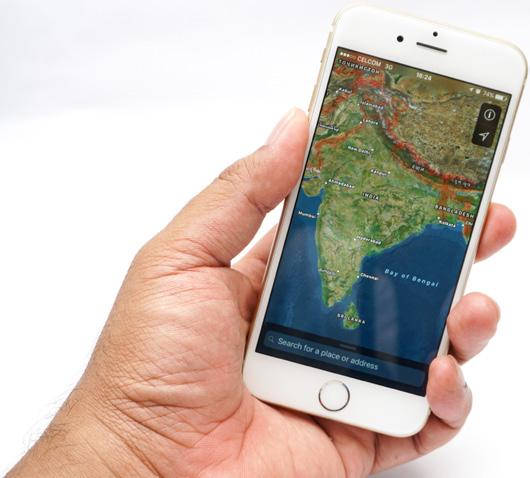
5 minute read
India Heart of the digital revolution
India has rapidly embraced digital content and now stands as a market that is catching up with the US and China and, arguably, offers the biggest opportunity out there for telemedia. Paul Skeldon crunches the numbers.
India’s burgeoning digital landscape has transformed the way consumers access and consume content. The value-added services (VAS) content market, a key segment of this digital revolution, has experienced remarkable growth, driven by increasing smartphone penetration, affordable data plans and a youthful population with a penchant for digital entertainment.
Given the size of the Indian population, it comes as no surprise that the numbers around streaming of digital services are huge. Just look at video streaming services. The video streaming (SVoD) market in India is forecasted to reach US$2.02 billion in 2024. It’s predicted to grow at a CAGR of 9.77% from 2024 to 2029, reaching US$3.22 billion by 2029.
The broader video streaming market (including both SVoD and AVoD) generated revenue of US$5,458.9 million in 2023. This is projected to reach US$25,044.1 million by 2030, growing at a CAGR of 24.3% from 2023 to 2030.
Music streaming adds another mass of streams. In 2023, India had 1.037 trillion total ondemand music streams, second only to the USA. India also witnessed the highest year-onyear increase in total annual on-demand music streams, with about 463.7 billion more plays compared to its 2022 figures.
Add in games, social media
UGC video, education/edutainment and all the other things consumers globally buy digitally and India has become a massive and exploding opportunity for the telemedia sector and the wider digital industry.
In fact, online education is by far the largest segment of the Indian content market, generating more money than video streaming in 2024.
While the details of each segment are detailed in the panels below, how those consumers consume the content and pay for it shows just how advanced the Indian VAS market is and how ripe an opportunity it is for the telemedia sector.
MARKET DYNAMICS
Consumers in the Indian market are hungry for content. The relatively recent proliferation of smartphones across great swathes of the emergent middle and upper classes in the country have driven a rapid expansion of content services. Aside from this demand for good content – long and short form, Western and local – consumer preferences are also strongly influenced by factors such as affordability, convenience and security, as they are in other markets.
Affordable data plans and payment options have made VAS content accessible to a wider audience, as has a competitive
content market, which has driven down price of the services themselves. Similarly, digital platforms offering a seamless user experience, enabling consumers to access content onthe-go and pay for it easily (see below) has also been a huge factor driving the market. These reliable payment systems and secure platforms are essential to build trust among consumers.
As a result, however, the Indian VAS content market is highly competitive, with several key players vying for market share. Telcos such as Reliance Jio, Airtel, and Vodafone Idea have invested heavily in digital content, offering a range of services, including music, video, and gaming. Meanwhile, global OTT giants such as Netflix and Amazon Prime Video, along with local players like Hotstar and JioCinema, have made significant inroads into the Indian market Digital content aggregation companies including Hungama and Times Internet also aggregate content from various sources and offer it to consumers through their platforms at an extremely competitive rate.
Mobile gaming companies, both domestic and international, are also capitalising on India’s growing gaming community.
HOW THEY PAY
As said, payments are a crucial part of delivering both the
convenience, security and affordability of these services and have been a major contributor to the explosive development of the Indian VAS market.
And there are quite a variety of payment tools used to purchase VAS content in India. Mobile wallets are particularly popular as they offer convenience and security for online transactions. Popular options include Paytm, Google Pay, PhonePe, and Airtel Payments Bank. While credit and debit card usage is increasing, it is still less prevalent than mobile wallets.
UPI (Unified Payments Interface) has also gained significant traction, allowing users to make instant payments using their bank accounts. Developed by the National Payments Corporation of India (NPCI), UPI is an instant payment system that enables inter-bank peer-topeer and person-to-merchant transactions. It allows users to link multiple bank accounts to a single mobile application, works through mobile devices and uses a Virtual Payment Address (UPI ID) to transfer funds between accounts.
It operates 24/7 and enables immediate money transfers and, as of 2024, has more than 260 million users in India and is supported by some 330 banks and 25 apps.
And, of course, carrier billing, where users charge purchases to their mobile phone bills, is extremely popular thanks not only to its convenience, but also that offers those with no bank account or card access to the digital world.
The Indian VAS content market is poised for further growth, driven by factors such as increasing smartphone penetration, improving internet connectivity, and rising disposable incomes. However, challenges such as piracy, content quality, and regulatory hurdles need to be addressed to ensure sustained growth.









